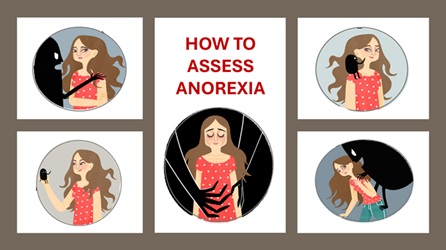How to Assess Anorexia – Understanding the Adolescent’s Relationship with the Eating Disorder
“The Life of Anorexia Assessment Sheet” is a game-changer for clinicians in the field, offering a holistic view of the patient’s experience and paving the way for more targeted and effective interventions.

Course Synopsis:
Adolescent eating disorders can be complex and challenging to address.
This free online mini course introduces an innovative and invaluable assessment tool called “The Life of Anorexia Assessment Sheet”.
This assessment tool is designed to help clinicians and practitioners gain a deeper understanding of a young person’s relationship with their eating disorder.
The tool goes beyond traditional assessments to uncover critical insights that can significantly impact treatment.
Research suggests that the three major factors that maintain the anorexia and impede treatment are:
- The relationship between the self and anorexia nervosa (Williams et al. 2015)
- The strength of the anorexic voice (Scott et al. 2014)
- The core eating disorder fears (Brown ML & Levinson CA 2022)
This tool allows the clinician to conduct an in-depth exploration of these factors.
By the end of this mini course, clinicians and practitioners will be equipped with a powerful tool to comprehensively assess these three major areas and tailor effective treatment plans that will improve overall treatment outcomes for young people struggling with anorexia.
Maria Ganci
Start the free mini course
This mini course was developed for clinicians experienced in treating eating disorders. Anorexia Nervosa is a life-threatening illness and treatment should always involve a team of professionals, in particular a pediatrician or General Practitioner to ensure medical stability.
A thorough assessment of the young person’s mental state should always be undertaken prior to using this tool and clinicians are advised to use their clinical discretion when using this tool.
Disclaimer: All care has been taken in the preparation of this course. No responsibility can be accepted from the misinterpretation of this work.

